The Benefits of Playgrounds in Public Spaces
Playgrounds are free amenities to put in public spaces. We look at the benefits of playgrounds: how and why making more green spaces that are safe for children can help your planned development to thrive.
CARESPACE
Richard Lasam
3/15/20256 min read
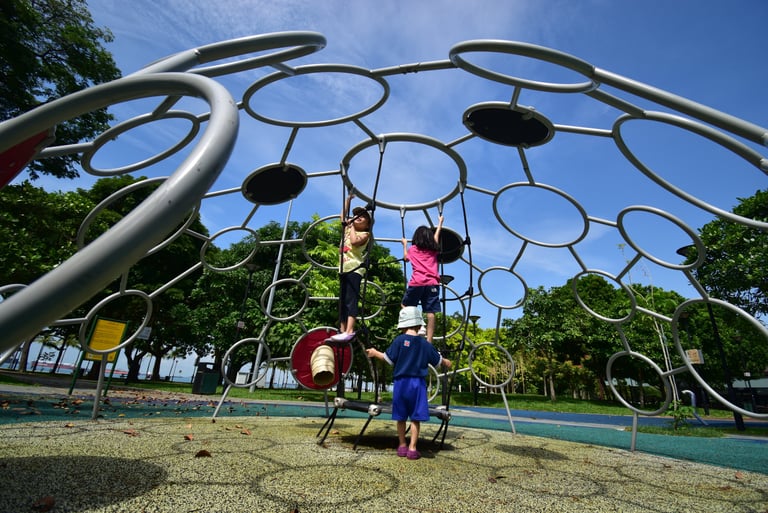

My kids are playground enthusiasts, to put it mildly. From their school playground to local public parks and even to the ones they visited in Singapore, there is just something about seeing a slide or a swing that sets off their imagination. Once they are there, it will be a solid few hours of them running and playing around the place. So it was a great surprise to find out in the news that a popular park call Ayala Triangle Gardens, which is located within a major redevelopment in Makati, recently opened a new playground for kids to enjoy for free.
This public park has long been a haven for people who look for green spaces in Metro Manila, since such spaces are an uncommon sight (unfortunately) in the heavily urbanized city. The most common activities are jogging, exercising, and children running about while the adults enjoy a cup of coffee or a full meal in one of the many restaurants inside the park. But it never had a playground of its own until this year. It is a treat for the kids—and a good sign that there might be a reversal of the current lack of playgrounds in the Philippines.
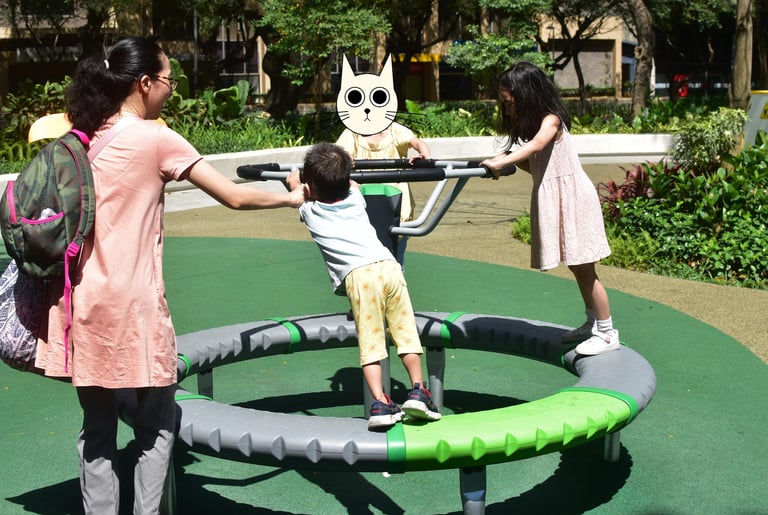

In the public space, playgrounds were once more prevalent and an everyday part of life, but there seems to be a global decline in recent years as noted in news from the United States and in the Philippines. This is unfortunate, as having a safe space for children to play in has great benefits to both their mental and physical development and to the community’s economic and physical amenities.
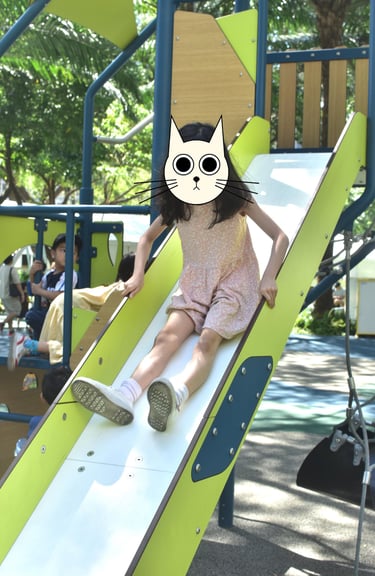

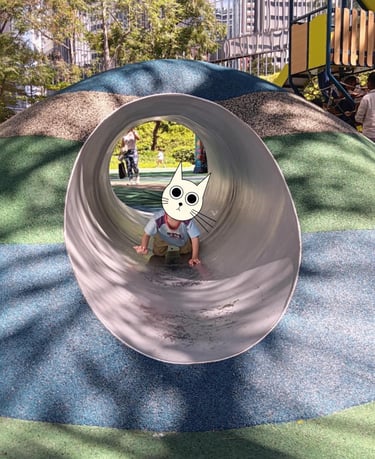

Benefits for children
For our little ones, playgrounds nurture a set of skills called Fundamental Motor Skills or FMS. As described in the study, “The Role of playgrounds in the development of children’s fundamental movement skills: Scoping review,” published by the National Library of Medicine in the United States of America:
"Fundamental movement skills (FMS) are the basic skills children should develop but are low in children from high-income countries. Literature indicates that playgrounds can play an important role challenging children’s balance, agility, and coordination.”
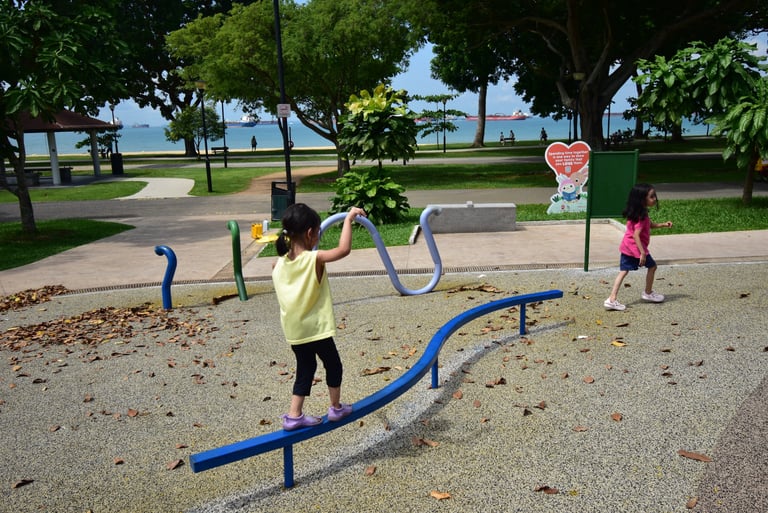

Playgrounds then, are an important learning space for children to grow up with a better acuity of the following physical and mental abilities:
1. Stability. These are the physical skills involved with keeping one’s body in a specific spot without deviation from where one is located. Such activities like sitting down, standing up, and balancing on areas with a smaller surface area are exercises that practice a child’s awareness of their center of gravity, a vital health metric in adulthood.
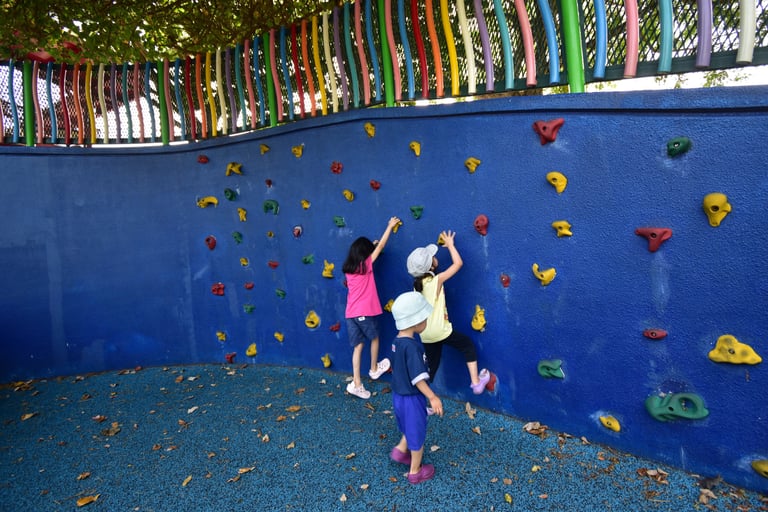

2. Locomotion. Focused on skills involving movement, these are the actions that kids enjoy doing in the playground: running around, jumping from one platform to the next, and climbing up ladders. Locomotion increases the physical strength and agility of children. It also expends a lot of energy that kids need to use during the day so that they have a good night’s sleep.
3. Object Control. This one practices the coordination of the child’s visual awareness and physical control of their hands and legs. Games like catching and throwing a ball are some of the common examples of object control exercises. Often called hand-eye coordination, this is a crucial skill that should be honed not just for physical fitness but also mental concentration and control. These types of activities are good practice for a child’s spatial awareness.
These elements are essential for a child to grow up with the right physical conditioning and mental awareness. Physical outdoor play improves mental learning. Mixing up outdoor activities like walking, swimming, and playing (whether in the playground or in a sports court or field) can reap more positive effects for people of any age.
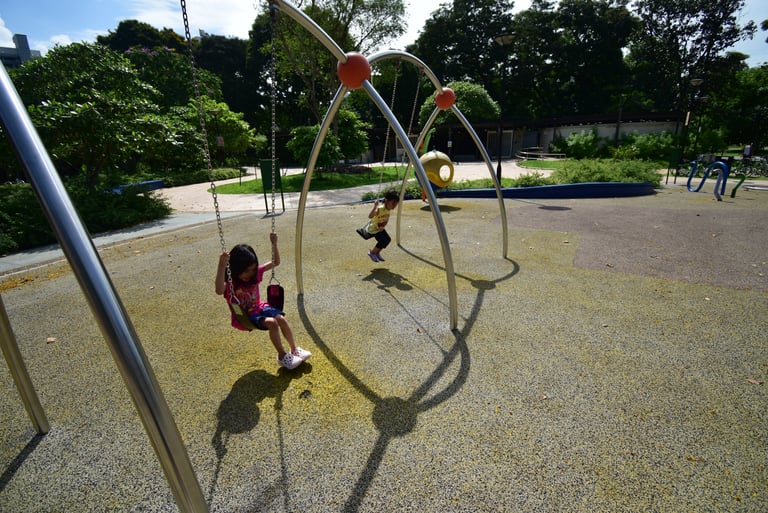

Community benefits
In terms of the community, a playground is an essential component in the urban space, as it improves both the economic and visual aspects of the place. When a space has a lively atmosphere caused by the sounds and bustle of recreational activities, it creates a communal space that attracts people to go there. In other words, the playground completes an urban space in the sense of providing a venue for the little ones to play to complement the other spaces in the area—like restaurants, cafes, and shops. To be specific, it creates the following effects:
1. Provides a space for children to enjoy. A public space should be configured to be a place that all walks of life can enjoy. Spaces dedicated to children lets families of all ages have a positive experience in the place. The sound and energy of playing children also increases the lively atmosphere of public spaces if the playground area is properly designed. What this means is that such play spaces should have ample areas for running and games for kids to do unstructured play and have clear visual lines from one playground play space to another so that parents and guardians will have an easier time monitoring the activities of their children. The playground itself should also be designed in such a way that the access points into and out of the space can be monitored easily to ensure the safety of the children. Natural barriers like trees and shrubs should also be located at the perimeter of the play space to restrict the movement of children and keep them inside the play area. The challenge of designers here is how to integrate the safety precautions of play spaces with the overall layout of the public spaces.
2. Increases walking traffic for shops and restaurants. When spaces for children are available, naturally, families will be the frequent visitors of the public place. This creates an area that commercial spaces can use to their advantage, allowing businesses to thrive with the larger number of potential customers around. Family restaurants, coffee shops, and other shops always benefit from having a playground nearby. What the designer must do is strike a balance. Designers must ensure that the play space and the commercial space are near enough to each other so that the end-users of each area will want to troop to the other. But the spaces should also be far enough apart so that the noise of the playground does not disrupt the more subdued atmosphere of the restaurant or café.
3. Adds a visually appealing element in the development. A public space thrives with the activity and energy of the visitors that enjoy the place. Such spaces, which encourage recreational activities in it, will always have more appeal if there are spaces for everyone. Such spaces should not only have areas for exercises, meditation, and/or public events, but also have dedicated spaces for children like proper play spaces.
The case for playgrounds has always been there since families are always on the hunt for a space in which their children will have fun. Singapore is a good example of areas that have integrated play spaces within the public space (an experience that I partially blogged about in my post about walking in Singapore.)
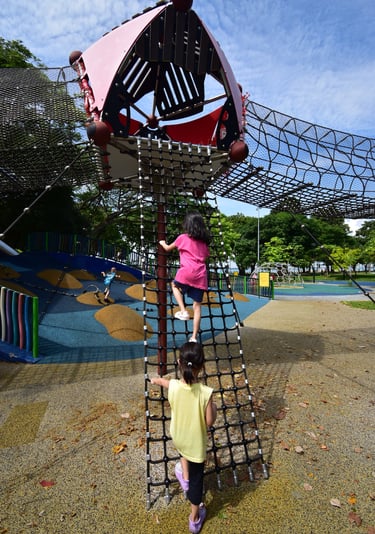

Hopefully, as can be seen in Singapore and in the new developments coming out here in the Philippines, the benefits of playgrounds and play spaces in general can encourage more such amenities to be developed and implemented in public spaces.
